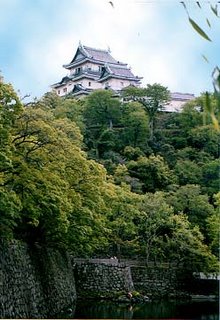Being a Guest in Tea Ceremony: What to do
Omotesenke is primarily silent: Communication between host and guest is para-verbal. Only twice during the ceremony is there any talk: when the host invites the guests to partake of sweets, and when the main guest invites the host to clean the bowl. In formal teas, there will be a conversation between the main guest and host at the very end of the ceremony. The Main Guest
Usually the most senior Tea Practitioner sits closest to the Host. This main guest helps other guests by showing them what to do during the ceremony. If you're attending a tea gathering for the first time, just watch the main guest and follow what they do.
Expressing thanks: Bowing: Main point to remember
Although verbal communication is kept to a minimum, there are key moments in Tea Ceremony when Host and Guest, or other guests, express their thanks to one another. This is done primarily through the Japanese bow. There are three levels of bows in Japanese Tea Ceremony: Shin, Gyo and So. These have varying degrees of depth, depending on who is being thanked.
In general, if someone offers you something, you bow. Before you partake of either tea or sweets, it is considered polite to offer it first to those who are sitting on your right and your left before eating or drinking yourself. The guests will bow to each other as though to say:
"Would you like to have this before me/once again?"
"No, no.. It's ok.. Please go ahead"
This 'dialogue' takes place with simultaneous bows by both guests.
Bowing Technique
Hands together, in front of you forming a triangle.
(tuck your thumbs under your palm)
offer to the right (bow)
offer to the left (bow)
place in front of you (bow)
When the guest should bow:
1. When the host enters, return their bow.
2. Sweets: bow in thanks. Offer right (bow), left (bow), then eat.
3. Drinking your tea: offer Right (bow), Left (bow), place the bowl in front of you then bow in thanks to the host.
How to drink the Tea
• Pick up the bowl in your Right hand, support with Left hand.
• Rotate the bowl, clockwise, 2 (small) quarter turns.
• Consume the tea in 3.5 sips (if you can). Bow in thanks and place the bowl in front of you. Take a moment to admire the Tea Bowl - the opportunity to view this bowl may never come again.









